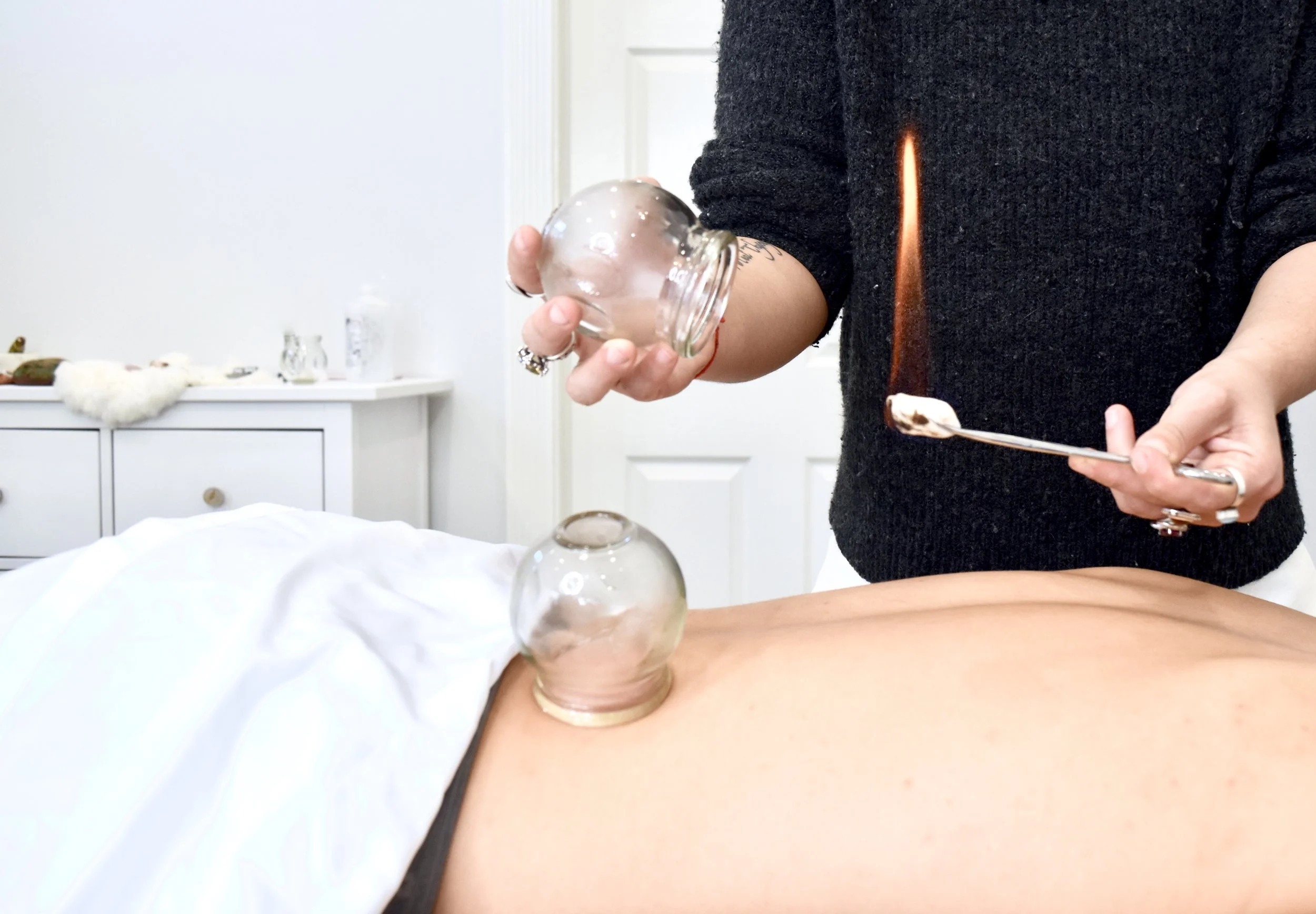Fire Cupping
Cupping is an ancient therapeutic technique, that dates as far back as 1550 B.C. in Ancient Egypt, and can be seen in Chinese and Middle Eastern cultures as well. Cupping is an alternative and complementary technique in TCM, and is when cups are placed along the surface of the skin for several minutes in order to elicit strong suction. Cups can be made from a few different materials, including glass, bamboo, silicone, and earthenware; however, glass is the classical Chinese therapeutic method.
There are also to kinds of cupping: Wet and Dry. In both scenarios a flammable substance is burned, typically alcohol, but sometimes herbs or paper can be used, and then as the flame is reduced, the cups are quickly placed on the skin. The cooling of the air inside the cup is what elicits the suction mechanism, and causes the skin to rise to the surface and redden as the blood vessels expand. The cups can be left stationary for several minutes, or moved up and down the length of the skin, known as “Sliding cupping.”
Dry cupping is the use of cups as described above. There are a wide range of conditions which cupping can treat, such as:
1. Dermatological Disorders: Acne, Herpes Zoster (Journal of Traditional and Complementary Medicine, 2015).
2. Pain
3. Facial Paralysis
4. Cervical Spondylosis
Moreover, the British Cupping Society reported that cupping therapy can be used to treat:
5. Blood disorders, including anemia and hemophilia
6. Rheumatic diseases, including arthritis and fibromyalgia
7. Fertility and gynecological disorders
8. High blood pressure
9. Mental-Emotional disorders like Anxiety and Depression
10. Bronchial congestion caused by allergies and asthma
11. Varicose veins
12. Carpal Tunnel
(Source: WebMD & British Cupping Society, 2018)
Wet cupping is when a lancet is used to prick the skin prior to the placement of the cups to draw drops of blood and interstitial fluids out of the body during the suction process. This is used during cases in which heat and inflammation are stuck in the body, and the practitioner needs to quickly pull it out. This method has been shown useful for enhancing the body’s natural excretory functions of the skin, and increase filtration in capillary beds and restore homeostasis, and enhance immunity. In addition, recent studies have found that concurrent compression pressure on the skin for more than a few seconds can benefit reactive hyperemia phenomenon.
**Source:El Sayed SM, Mahmoud HS, Nabo MMH (2013) Methods of Wet Cupping Therapy (Al-Hijamah): In Light of Modern Medicine and Prophetic Medicine. Altern Integr Med 2:111. doi:10.4172/2327-5162.1000111
There is also a form of cupping sometimes called “needle cupping”, in which a needle is inserted into the skin first, and then a cup is placed over it. Sometimes this can elicit blood from the skin during suction, but not always.
When done by a licensed practitioner, cupping is a safe and effective form of treatment for a list of disorders and ailments. The major side effect is usually redness or bruising in the area and skin sensitivity in the areas of treatment, which can last up to 10 days, but usually clears with 3-7 days.
**Although the treatment does not have any major side effects, it is not indicated for individuals with certain medical or health conditions, including some bleeding disorders and immunocompromised patients suffering from decreased or inadequate healing mechanisms.

